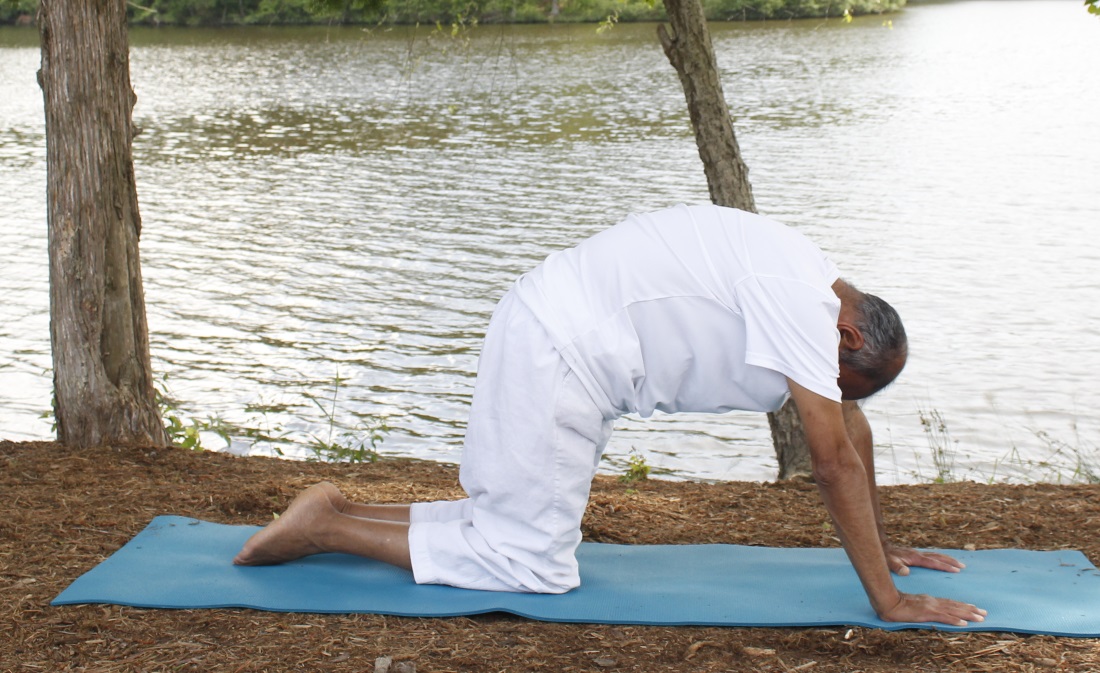
Cat Pose
Back pain, especially pain in the lower back, is perhaps the most common reason why people join a yoga class. Many people notice stiffness in the back when they wake up in the morning. Most stretches in a typical yoga routine are geared toward making the spine more flexible, stronger and healthy.
Marjarasana (cat and cow stretch) is a simple stretch that, when practiced regularly, can go a long way in keeping the spine healthy and pain free. In the yoga routine that I practice and teach, I start each asana (stretching) session with Marjarasana.
The word "marjara" (मार्जार) in Sanskrit means a cat. In English, the name gets commonly translated as "cat and cow". In this stretch, the spine is moved rhythmically up and down. While breathing in the movement of the spine resembles the ‘hump’ of a cow’s back. While exhaling the spine is moved so it resembles the back of an angry cat. Hence the name "cat and cow".
Step-by-step

Cat/cow neutral
-
Come on to all fours on your mat with the hands positioned vertically under the shoulders and the knees vertically under the hips. Keep the knees hip width apart and the hands shoulder width apart. Spread the fingers wide and try to keep the palms flat and firm on the ground.
- In the starting position, the spine is flat like a table top. While inhaling, lift the head and chest up, tail bone up, and lower the navel down toward the ground. This will create an arch in the spine. Think of it as a little valley in the spine.
- While exhaling, lower the chin down to the chest, tuck the tail bone in, and lift the navel up. This will create a rounding of the spine. Think of it as creating a small hill on the spine.
- Using the "ujjayi" pattern of breath, keep the breathing long and smooth and keep the movements of the spine synchronized with the breath. At the end of each inhalation and exhalation, give a small pause so you can become aware of the transition of the breath as well as of the spinal movement.
- Continue these movements for 8-10 breaths. Finally bring the spine back to the neutral, flat table top position and pause there for a couple of breaths. Then sit comfortable in a cross-legged position and relax.
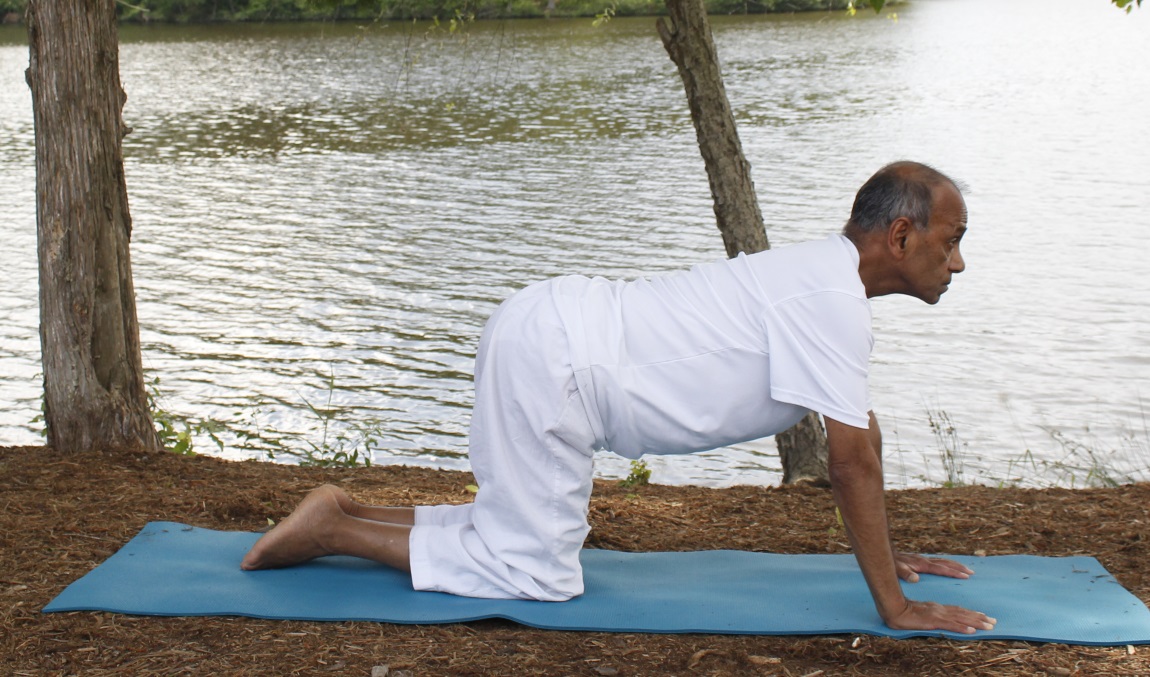
Cow Pose
Variation 1
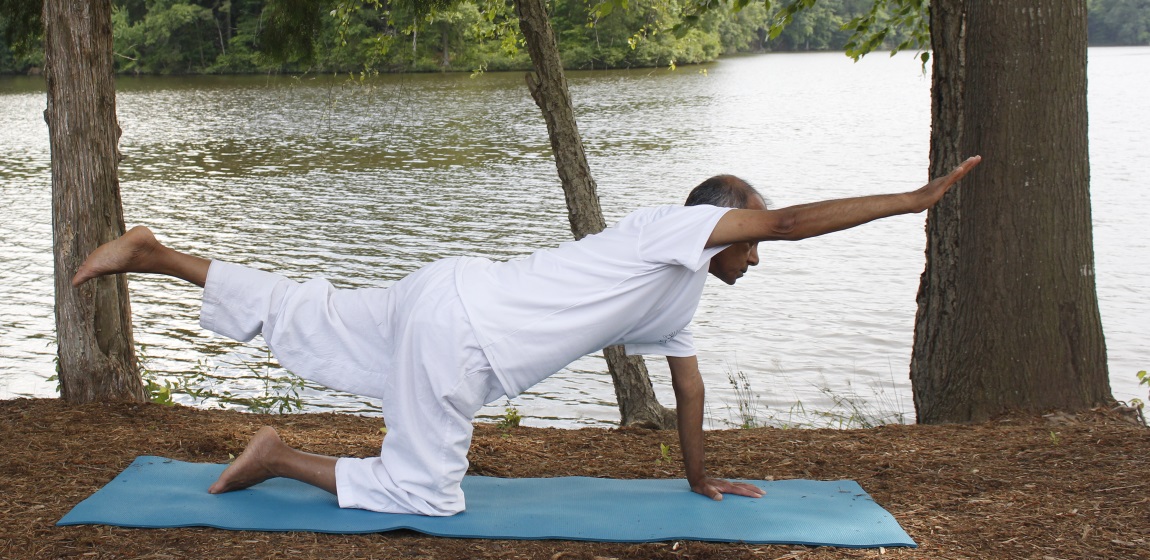
Cow pose variation
- Come on to all fours on your mat with the hands positioned vertically under the shoulders and the knees vertically under the hips. Keep the knees hip width apart and the hands shoulder width apart. Spread the fingers wide and try to keep the palms flat and firm on the ground. In the starting position, the spine is flat like a table top.
- While inhaling, lift the right foot and stretch the right leg back and up; at the same time lift and stretch the left arm in front and upwards.
- While exhaling, bend the right knee, hold the right shin with the left hand and lower the chin down to the chest. Gently guide the right knee with your hand toward the forehead.
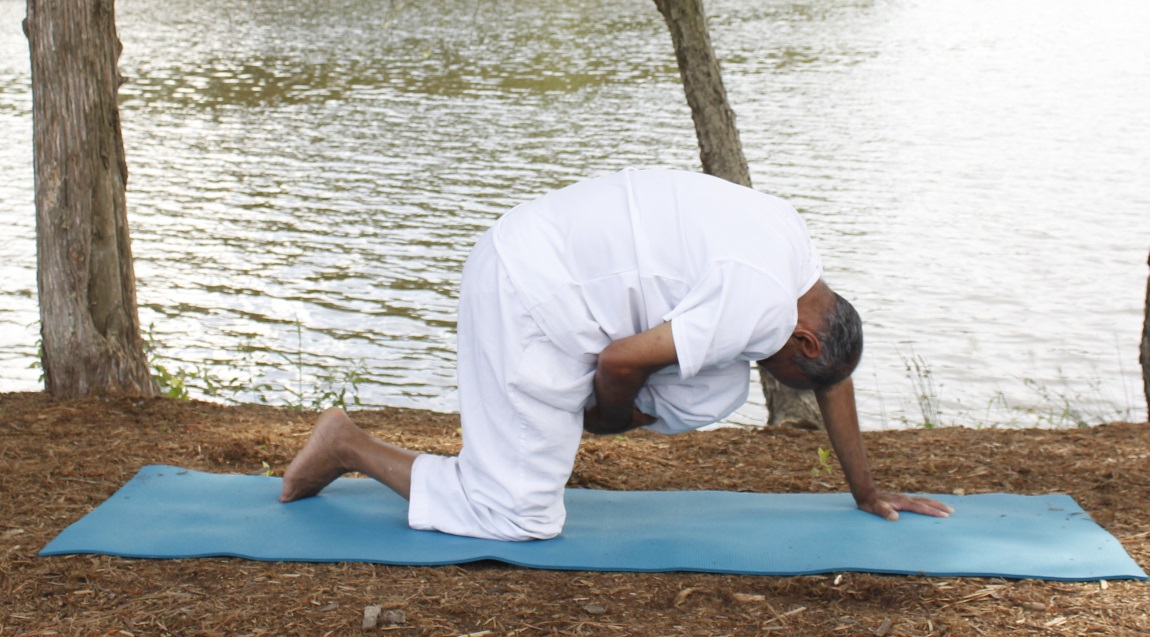
Cat Pose variation
- Continue with these movements for four more deep breaths. Try to synchronize the movement of the arms and legs with deep breathing. After the final exhalation, release the hand and knee down and relax in the neutral position for a couple of breaths.
- Now repeat the above moves on the other side. Finally, rest in the neutral position for a few breaths.
Variation 2
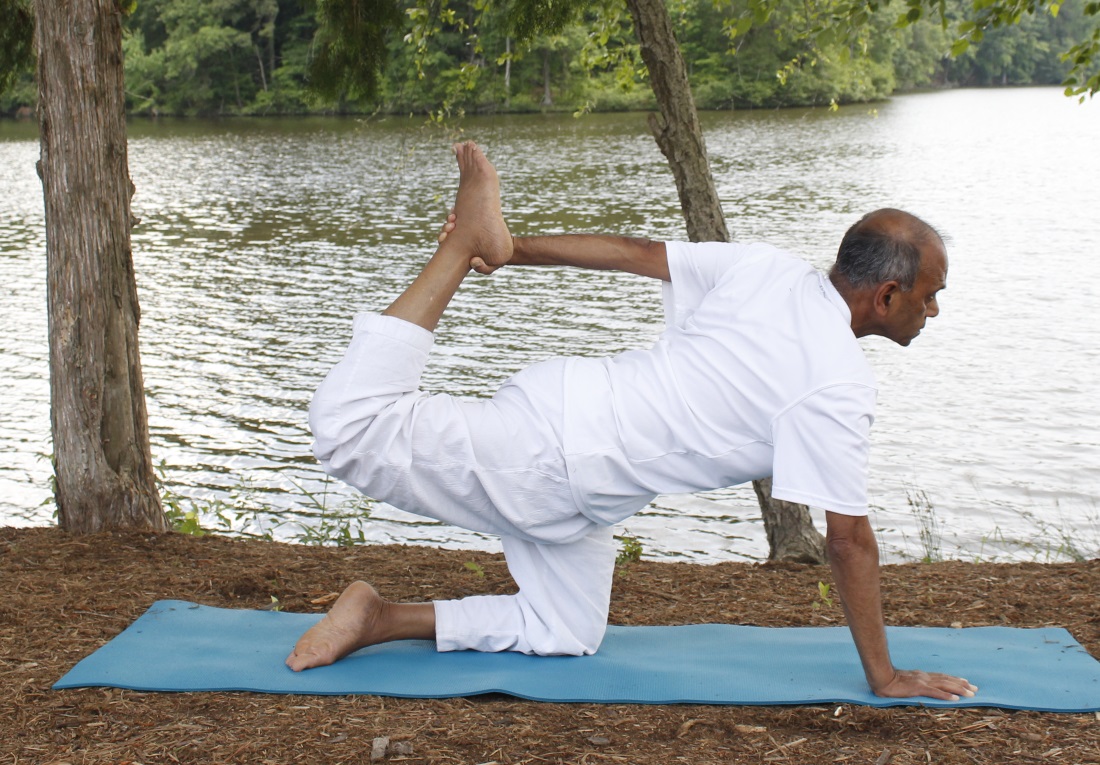
Cow pose variation
- Come in to the starting position as described above.
- Lift the right foot up and hold the right ankle with the left hand. Use the foot to pull the arm and shoulder back and up.
- Try to keep the shoulders square and at the same level while we try to lift the foot and the knee higher. Maintain the final position for about six breaths.
- Bring the hand and the foot down to the starting position.
- Now, hold the right shin with the left hand and lower the chin down to the chest. Gently guide the right knee with your hand toward the forehead. Stay in this position for about six breaths.
- Now release the hand and knee down and rest in the neutral position for a couple of breaths.
- Repeat the above two moves on the other side.
Benefits:
- Helps maintain good spinal alignment
- Strengthens and stretches back muscles
- Helps release lower back pain
- Stretches and strengthens the core muscles
- Provides massage to the internal organs in the abdominal area and improves their function
- Improves digestion
- Stretches the hips
- Stretches the neck muscles and relieves neck pain
- The rounding of spine (cat move) lengthens the spine and improves circulation to the discs between the vertebrae. This helps in relieving any stiffness and stress in the spine.
- Synchronizing the body movement with the breath makes the mind focussed.
Contraindications
- Practice it with caution in case of severe back-ache or pain in the neck area
- Persons with knee injury must avoid this asana.
- Hypertension and heart patients should practice it slowly – not more than 2-3 times.
Recent Comments